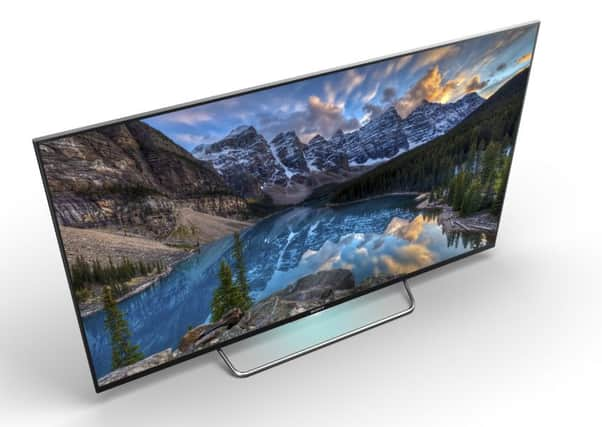Tech Talk: Why your new Blu-ray player’s already obsolete


It may have been the high-definition format of choice a year or two ago, but it’s already been consigned to the Betamax bin of history by the onward march of technology.
The new gold standard in viewing is 4K, also known as ultra high-definition. Its eight million pixels produce a picture with four times the clarity of previous HD systems - so clear, in fact, that it can be mistaken for 3D, with no need for silly red-and-green spectacles to create the illusion.
Advertisement
Hide AdAdvertisement
Hide AdAll the big Japanese manufacturers are now churning out 4K sets, with a starting price of a little under £1,000. But for most people, the shortage of anything to actually watch in ultra-HD, other than promotional videos, means there’s little point in splashing out yet.
Streaming services like Netflix and Amazon Instant Video are currently the main providers of 4K movies, for those with fast enough internet connections to handle the enormous extra bandwidth. But that will change towards the end of the year, when the next generation of video disc players - the successors to Blu-ray - go on sale. That means the ones currently in shops are obsolete before they’ve even left the shelves.
The launch of the new players will be accompanied by a swathe of Hollywood releases, and while prices will be high at first we will at least be spared a format war of the sort that accompanied the launch of Blu-ray - when a rival system called HD-DVD slowed the take-up process. This time, and for the first time, all the main players are on the same page.
But the question is: in an age of internet streaming, are discs still necessary at all? The whole business of distributing films and TV shows through supermarkets and video libraries dates back to the early 80s, and its transition to a new generation of hardware is by no means assured.
Advertisement
Hide AdAdvertisement
Hide AdYour options for watching regular programmes in 4K are extremely limited: no channels broadcast in ultra-HD, and the BBC is only at the “looking into the possibility” stage. 4K televisions will electronically enhance regular HD pictures to something approximating the new format but the results are never as good as the real thing, and some sets make a better fist of it than others.
To fully appreciate the quality of ultra-HD you will need a screen 55 inches or bigger, and a fairly sizeable room in which to put it. A home cinema, in other words. But don’t start knocking down walls just yet because before the format has even reached the mainstream, Japanese broadcasters are already talking about its successor - 8K.
As ever, don’t let the marketing hype sway your judgement. In a shop, where you typically stand a few inches in front of the screen, the difference between formats is as clear as the nose on your face. But at home, I can’t always distinguish between even standard and high definition. So, let your eyes be the judge - even as Blu-ray disappears before them.